Introduction
As you get older, it’s common to notice changes in your balance. These changes may be mild at first, but over time they can affect your stability and increase the risk of falls. This can happen due to a balance disorder, which may be caused by age-related changes in the body, underlying health conditions, certain medications, vision changes, or issues affecting your inner ear or brain. A balance disorder may make you feel dizzy or unsteady. You might also experience sensations of falling, an unsteady gait, blurred vision, or confusion. Balance exercises are physical activities designed to help improve your stability and coordination by strengthening the systems that control your body’s position1. Strength and balance exercises for seniors not only help to improve your stability but also improve your energy levels and mood and reduce the chance of early death2.
Why Seniors Lose Balance with Age
As you grow older, you tend to face issues with balance. This can occur because of:
- Muscle weakness: Muscle weakness leads to fatigue and is said to increase the risk of falls by 76%. Adults who have had a previous fall are three times more likely to have a fall again2,3.
- Problems with inner ear: The labyrinth, a part of the inner ear, is responsible for your balance. Certain ear infections and diseases may lead to the inflammation of the labyrinth, thereby resulting in imbalance and vertigo1.
- Reduced vision: As you age, the eyesight deteriorates and you may have increased sensitivity to bright lights or glare, thereby affecting your overall stability and balance3.
- Reduced joint mobility: Physical inactivity and certain chronic health conditions that occur with advanced age may result in reduced joint mobility (the ability to move the joint freely without any pain or discomfort). Reduced joint mobility can lead to poor posture, which can affect your stability and balance3.
- Medications: Certain medications can cause dizziness or drowsiness, affecting your balance. If you notice balance problems while taking any medications, it is recommended that you consult your doctor1.
- Chronic medical conditions: If you are suffering from any chronic medical conditions, such as diabetes, heart disease or thyroid issues, you may also experience balance issues1.
- Effect of bone density: Osteoporosis or weakened bones is a condition that commonly affects seniors. Weakened bones increase the risk of falls3.
- Alcohol consumption: Alcohol consumption may affect the function of the inner ear, resulting in problems with balance1.
Understanding these factors is essential for reducing your risk of falls and promoting a better quality of life as you age.
Benefits of Balance Exercises for Seniors
The various benefits of exercises for balance for seniors include:
- Reduced risk of falls: Balance exercises included in your daily routine can help to reduce the risk of falls among older adults2,3.
- Improved posture: Certain balance exercises can enhance the body’s ability to maintain stability in both static and dynamic situations, making everyday movement safer and more stable. These exercises can also boost postural control by correcting the body’s centre of gravity4,5.
- Increased mobility: These simple exercises help to increase the range of motion in your hips and legs, thereby improving your stability6.
- Increased energy levels: Apart from reducing the risk of falls and improving mobility, the strengthening and balance exercises can also help to increase your energy levels, improve your sleep, and reduce the risk of early death2.
- Enhanced muscle strength: Balance exercises for seniors help to improve muscle strength and balance1,2,3.
- Reduced risk of osteoporosis and sarcopenia (age-related loss of muscle strength and function): Practising these exercises can help to reduce the loss of muscle mass and strength and reduce the risk of falls, thereby decreasing the risk of osteoporosis and sarcopenia7.
- Reduced joint pain and knee pain: Practising these exercises helps in better alignment and core control and helps to alleviate knee pain and joint pain8.
- Enhanced cognitive function: Studies have shown that doing balance training exercises offers a significant improvement in memory and in spatial cognition (understanding where things are around them)9.
Incorporating balance exercises in your daily routine can enhance your overall well-being and support a more independent lifestyle.
What to Know Before You Start
Before beginning balance exercises, it is important to take a few safety precautions to protect yourself from injury10.
- Always listen to your body: If you feel unsteady at any point, take steps to steady yourself.
- Begin slow: Go slowly and move mindfully to avoid falls.
- Use support: Having a sturdy chair, wall, or even a trusted person nearby for support can offer added safety and confidence as you begin.
- Dress comfortably: Wear comfortable, stable footwear or consider not wearing footwear (going barefoot) to improve your grip on the floor or mat.
These simple measures can help ensure a safer and more effective start to your balance training routine. If you are unsure about any exercise, it is best to consult your doctor, especially if you have any underlying health conditions10.
Tips to Improve Your Balance
Some simple and safe lifestyle tips that seniors can incorporate into their life to help improve balance and reduce the risk of falls include11:
- Strengthen Your Muscles and Bones: Muscle and bone strengthening and balance activities such as standing on one leg, heel-to-toe walking, Yoga, Tai Chi, dance, and resistance training not only increase your core strength, but may also offer health benefits like helping improve your mood and sleeping patterns, increasing your energy level, and reducing your risk of falls2,13.
- Improve Your Posture: Good posture helps keep you steady. Try to keep your back straight, shoulders relaxed, and head level while sitting, standing, or walking5.
- Check Your Vision and Footwear: Poor eyesight or ill-fitting footwear can throw off your balance. Get regular eye check-ups and wear shoes with good grip, low heels, and proper support1,3.
- Make Your Home Safer: Make your home fall-proof by removing tripping hazards from your home and install grab bars in your bathrooms if needed. A safe environment reduces the risk of falls while you work on improving your balance1.
Following these simple tips can help reduce the risk of falls and boost your confidence as you age.
Balance Exercises for Seniors
Certain exercises to improve balance for seniors include:
1. Single-Leg Stand
This exercise is done by standing straight, facing a wall, and extending your hands forward so that your fingertips lightly touch the wall. Raise your left leg while ensuring your hips remain even. Slightly bend your right leg for balance. Maintain this lifted position for 5 to 10 seconds, then lower your left foot back to the ground. This exercise should be repeated thrice for each leg12.
2. Heel-to-toe Walk
As discussed earlier, place your left foot in front of your right foot so that your left heel touches your right toes. Next, move your right foot in front of your left food. You should repeat this exercise at least 5 times daily12.
3. Side-Leg Raises
In this exercise, while standing, raise your right leg sideways. Hold it in that position for a few seconds and then lower your leg. Repeat with your left leg5.
4. Side-to-side Walk
Stand straight with your knees bent slightly and feet together. Extend one leg and step to the side, moving only one foot. Move your other foot to join both feet together. You should repeat this exercise at least 10 times. Ensure that your hip does not drop while moving to the side12.
5. Step-up Exercise
Perform this exercise preferably near a step or elevation. Place one leg on the step or elevation. Step up by bringing the other leg to join both your legs. Step down, one leg at a time to the start position and repeat12.
6. Cross-leg Exercise
This exercise involves stepping one foot across the other, then bringing your feet together, mimicking a sideways walking motion. Repeat this exercise at least 5 times every day to improve your balance12.
Incorporating these easy balance exercises for seniors into your daily routine can enhance stability and reduce the risk of falls.
Tools & Equipment That Help
Tools and equipment that can help in strength and balance exercises in seniors to improve their stability include:
1. Fitness or physio balls
Sitting, lying, or balancing on a fitness ball helps to strengthen your back and stomach muscles and also helps to improve your core stability13.
2. Balance boards
Balance boards, such as wobble boards, create an unstable surface that challenges your balance, helping to strengthen your muscles and improve posture14.
3. Resistance bands
These bands can be used for many activities like leg lifts, side steps, and arm movements. They help to improve balance, flexibility and reduce the risk of falls in seniors15.
4. Foam rollers
The use of foam rollers improves range of motion and helps to improve your core stability, gait, functional fitness, and balance16,17.
5. Suspension trainers
Suspension trainers use your bodyweight as resistance to improve balance and your functional performance18.
Including supportive tools in a balance training routine can boost confidence and improve effectiveness of stability exercises. Consult your fitness expert to ensure proper supervision or support when using balance equipment, especially if you are a beginner.
How Often Should Seniors Do Balance Exercises?
If you are aged 65 years or above, it is important to be physically active, even if it is through light movements like walking or gentle stretching. The frequency of your activity should be as follows19,20:
- Balance exercises at least 2 days a week to specifically support balance, flexibility, and muscle strength.
- About 150 minutes per week of moderate intensity activity like brisk walking. If you are already active, 75 minutes of vigorous-intensity exercise or a combination of both moderate and vigorous activity can be equally beneficial.
- Break up sedentary time with light movement to keep the body engaged and circulation flowing.
If you have experienced a fall or are afraid of falling, regular practice of strength, balance, and flexibility exercises can make a significant difference19,20.
Also Read: Falls in the Elderly: Life expectancy, Causes, Prevention, & Safety Tips
When to Seek Medical Help
You should consult your doctor if you experience frequent falls, sudden dizziness, numbness in your legs, or trouble with coordination while doing balance exercises, as these can be signs of an underlying health problem. Other signs include changes in vision or hearing, confusion, or muscle weakness. These issues can affect your ability to maintain stability and may indicate problems with your inner ear, nervous system, or circulation21.
It is also important to talk to your doctor before starting balance exercises if you have existing health conditions like diabetes, heart disease, or joint problems. Getting a proper evaluation can help ensure your safety and your fitness expert will be able to recommend the most suitable exercises for you after that21.
Also Read: Pneumonia in the Elderly: Causes, Symptoms, Treatment, and Prevention
Conclusion
Maintaining balance becomes increasingly important as you age, not only to reduce the risk of falls but also to support independence and overall well-being. By understanding the causes of balance issues and incorporating these balance exercises for seniors, you can significantly improve your strength, mobility, and confidence.
Frequently Asked Questions (FAQs)
What is Tai Chi? Can it help with balance in older adults? Tai Chi is a type of aerobic exercise that is good for older adults. It involves traditional Chinese practices of flowing movements combined with deep breathing and focus. Doing Tai Chi can help improve your strength, flexibility, and balance. It also helps you become more aware of your body, think more clearly, and feel calmer and less stressed22.
At what age should I start balance exercises? You can begin balance exercises at any age, but it is important to practice balance exercises at least 2 days a week for older adults (60 years and above) to maintain mobility and reduce your risk of falls19,20.
What is the role of hydration in balance? Dehydration can cause dizziness and low blood pressure, increasing your risk of falls. Staying well-hydrated supports better balance and overall health23.
Can I practice balance exercises if I have suffered from a stroke? Yes, regular physical activity has been shown to reduce the risk of heart diseases and stroke. Practising balance exercises after a stroke can improve your heart strength, balance and upper arm strength. However, it is best to consult your doctor and understand which exercises are best suitable for you11.
References
- National Institute on Aging. Older Adults and Balance Problems [Internet]. NIH. 2022. Available from: https://www.nia.nih.gov/health/falls-and-falls-prevention/older-adults-and-balance-problems
- Major health benefits from strengthening and balance activity [Internet]. GOV.UK. 2018. Available from: https://www.gov.uk/government/news/major-health-benefits-from-strengthening-and-balance-activity
- Wang J, Li Y, Yang GY, Jin K. Age-Related Dysfunction in Balance: A Comprehensive Review of Causes, Consequences, and Interventions. Aging and disease [Internet]. 2024 Jan 1;16(2). Available from: https://pmc.ncbi.nlm.nih.gov/articles/PMC11964428/
- Lesinski M, Hortobágyi T, Muehlbauer T, Gollhofer A, Granacher U. Effects of Balance Training on Balance Performance in Healthy Older Adults: A Systematic Review and Meta-analysis. Sports Medicine [Internet]. 2015 Sep 1;45(12):1721–38. Available from: https://pmc.ncbi.nlm.nih.gov/articles/PMC4656699/
- MedlinePlus. Guide to Good Posture [Internet]. National Library of Medicine; 2019. Available from: https://medlineplus.gov/guidetogoodposture.html
- Harvard Health. Move of the month: Standing side leg raise [Internet]. 2023. Available from: https://www.health.harvard.edu/heart-health/move-of-the-month-standing-side-leg-raise
- National Institute on Aging. Health Benefits of Exercise and Physical Activity [Internet]. NIA. 2024. Available from: https://www.nia.nih.gov/health/exercise-and-physical-activity/health-benefits-exercise-and-physical-activity
- Prabhakar AJ, R S, Thomas DT, Nayak P, Joshua AM, Prabhu S, et al. Effectiveness of balance training on pain and functional outcomes in knee osteoarthritis: A systematic review and meta-analysis. F1000Research [Internet]. 2022;11:598. Available from: https://pubmed.ncbi.nlm.nih.gov/38444514/
- Rogge AK, Röder B, Zech A, Nagel V, Hollander K, Braumann KM, et al. Balance training improves memory and spatial cognition in healthy adults. Scientific Reports [Internet]. 2017 Jul 18;7(1). Available from: https://pmc.ncbi.nlm.nih.gov/articles/PMC5515881/
- National Institute on Aging. Three Types of Exercise Can Improve Your Health and Physical Ability [Internet]. NIA. 2024. Available from: https://www.nia.nih.gov/health/exercise-and-physical-activity/three-types-exercise-can-improve-your-health-and-physical
- American Heart Association. Balance Exercise [Internet]. www.heart.org. 2014. Available from: https://www.heart.org/en/healthy-living/fitness/fitness-basics/balance-exercise
- National Health Service. Balance exercises – Exercise [Internet]. NHS. 2019. Available from: https://www.nhs.uk/live-well/exercise/balance-exercises/
- Skjonsberg L. Core-Strength Exercises with a Fitness Ball [Internet]. HealthySD.gov. 2014. Available from: https://healthysd.gov/core-strength-exercises-with-a-fitness-ball/
- Ogaya S, Ikezoe T, Soda N, Ichihashi N. Effects of Balance Training Using Wobble Boards in the Elderly. Journal of Strength and Conditioning Research [Internet]. 2011 Sep;25(9):2616–22. Available from: https://pubmed.ncbi.nlm.nih.gov/21869636/
- Kwak CJ, Kim YL, Lee SM. Effects of elastic-band resistance exercise on balance, mobility and gait function, flexibility and fall efficacy in elderly people. Journal of Physical Therapy Science [Internet]. 2016;28(11):3189–96. Available from: https://www.ncbi.nlm.nih.gov/pmc/articles/PMC5140827/
- Junker D, Stöggl T. The Training Effects of Foam Rolling on Core Strength Endurance, Balance, Muscle Performance and Range of Motion: A Randomized Controlled Trial. Journal of Sports Science & Medicine [Internet]. 2019 Jun;18(2):229. Available from: https://pmc.ncbi.nlm.nih.gov/articles/PMC6543984/
- Ryu HR, Kim MJ, Yoon ES, Kim DY. Effects of foam roller-based combined exercise on functional fitness, balance, and gait in older women. Journal of Exercise Rehabilitation [Internet]. 2024 Dec 26 [cited 2025 May 25];20(6):240–9. Available from: https://pmc.ncbi.nlm.nih.gov/articles/PMC11704707/
- Blasco JM, Domínguez-Navarro F, Tolsada-Velasco C, de-Borja-Fuentes I, Costa-Moreno E, García-Gomáriz C, et al. The Effects of Suspension Training on Dynamic, Static Balance, and Stability: An Interventional Study. Medicina [Internet]. 2023 Dec 26;60(1):47–7. Available from: https://pmc.ncbi.nlm.nih.gov/articles/PMC10818514/
- NHS. Physical activity guidelines for older adults [Internet]. 2024. Available from: https://www.nhs.uk/live-well/exercise/physical-activity-guidelines-older-adults/
- Centers for Disease Control and Prevention. Physical Activity for Older Adults: An Overview [Internet]. 2024. Available from: https://www.cdc.gov/physical-activity-basics/guidelines/older-adults.html
- National Institute on Deafness and Other Communication Disorders. Balance Disorders [Internet]. NIDCD. 2018. Available from: https://www.nidcd.nih.gov/health/balance-disorders
- Yang FC, Desai AB, Esfahani P, Sokolovskaya TV, Bartlett DJ. Effectiveness of Tai Chi for Health Promotion of Older Adults: A Scoping Review of Meta-Analyses. American Journal of Lifestyle Medicine [Internet]. 2021 Mar 24;16(6):155982762110012. Available from: https://pmc.ncbi.nlm.nih.gov/articles/PMC9644143/
- Latzka WA, Montain SJ. Water and Electrolyte Requirements for Exercise. Clinics in Sports Medicine [Internet]. 1999 Jul;18(3):513–24. Available from: https://pubmed.ncbi.nlm.nih.gov/10410838/
Disclaimer: The information provided here is for educational/awareness purposes only and is not intended to be a substitute for medical treatment by a healthcare professional and should not be relied upon to diagnose or treat any medical condition. The reader should consult a registered medical practitioner to determine the appropriateness of the information and before consuming any medication. PharmEasy does not provide any guarantee or warranty (express or implied) regarding the accuracy, adequacy, completeness, legality, reliability or usefulness of the information; and disclaims any liability arising thereof.























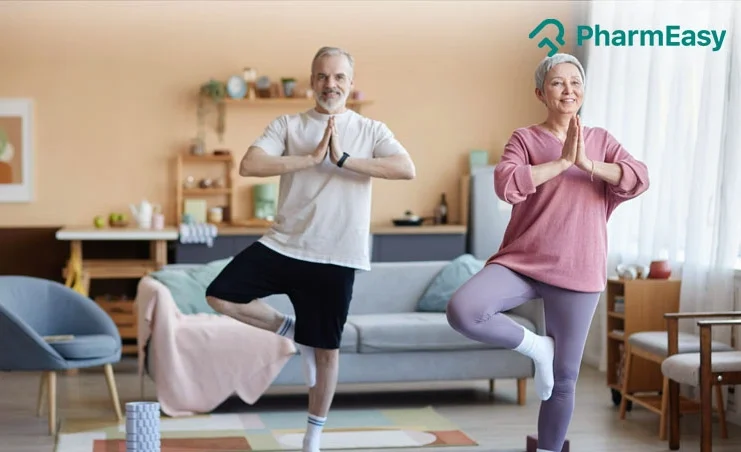
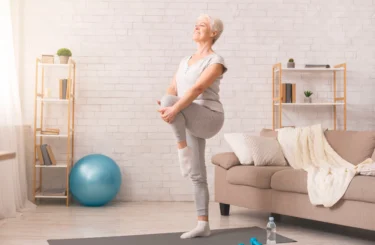
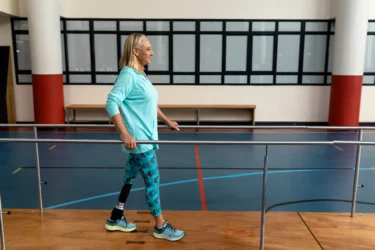
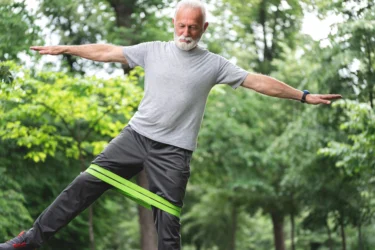
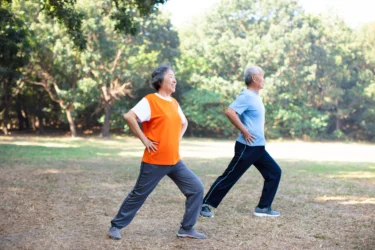
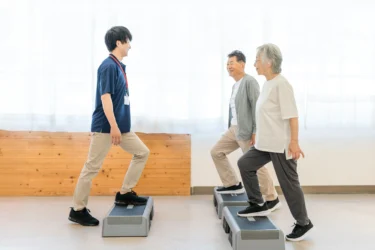
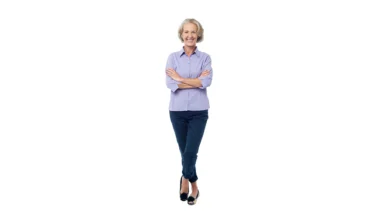
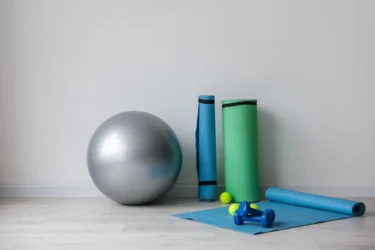
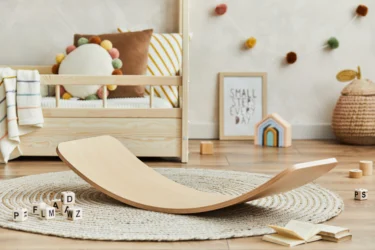
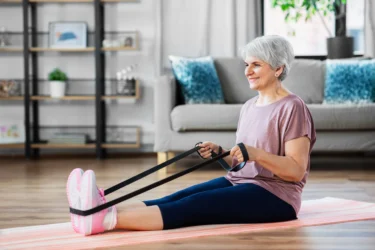
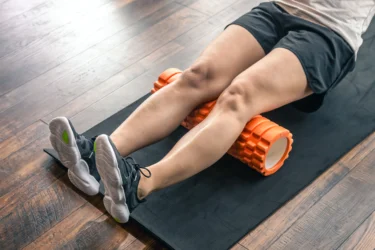
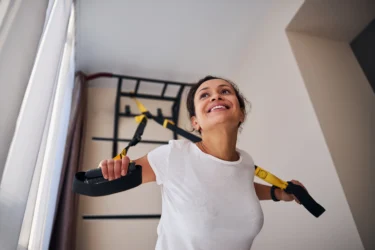

Comments